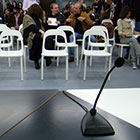04-14/3/2014, Volos
See the poster.
"The Truth of Photography"
Lecture by Iraklis Papaioannou.
Wednesday 29th of January 2014, at 8:45 p.m. Amphitheater of the Department of Architecture, Uth.
"Political Representations"
Lecture by Demetri Sevastakis.
Tuesday 28th of January 2014, at 8:45 p.m. Amphitheater of the Department of Architecture, Uth.


